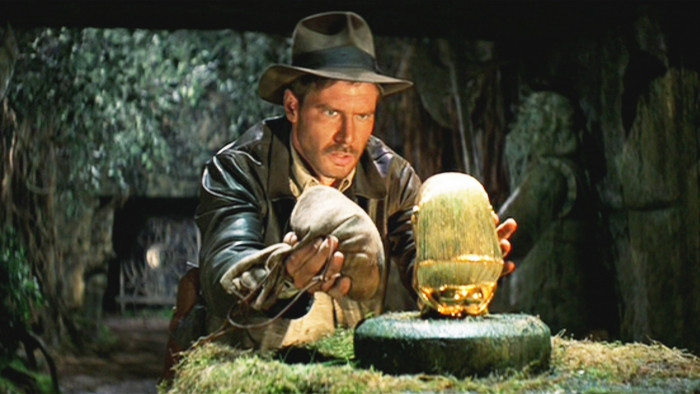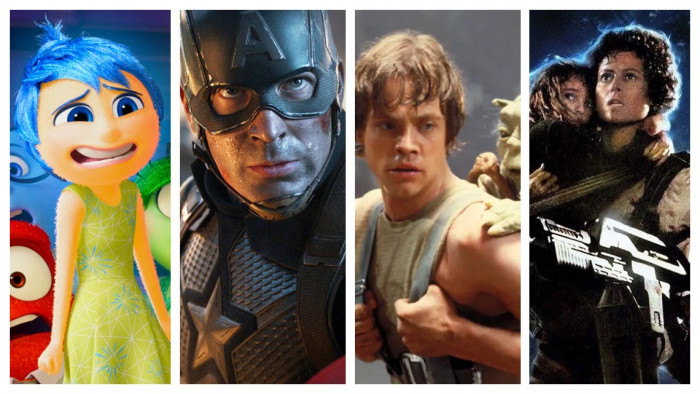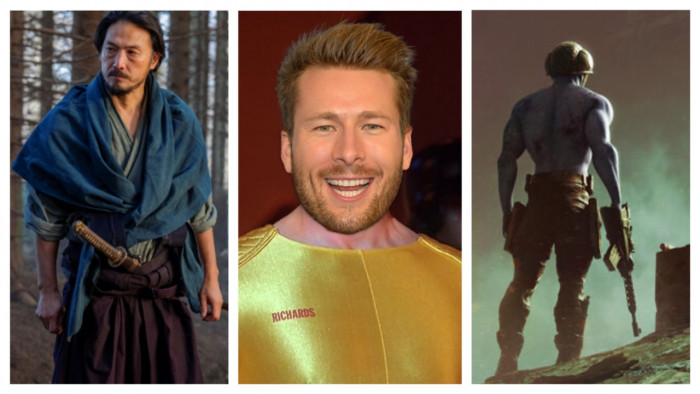Blockbusters rule the planet, but at the Sundance festival Tom Ellen finds a resurgent indie film scene.
It’s the third day of Sundance 2014 and I’m in a twee Utah café, trying to decide if I can genuinely patronise an establishment with cup sizes labelled ‘Willow’ (small) and ‘Hagrid’ (large), when a couple joins the queue behind me.
“I can’t believe it,” says the woman, excitedly. “This is crazy!”
“I know!” says the man, more excitedly. “Twenty-four hours ago we didn’t even have a meeting. Now I’ve got a cheque in my pocket and we’re making a movie!”
The couple, I discover, are filmmakers called Josh and Rebecca. They arrived at Sundance the day before with an idea for a documentary, but no funds, nor any real prospects of acquiring them. A day later, they’ve had a meeting, a green light and a sizeable bank balance boost.
“Our assistant got talking to a producer at a party last night,” Josh tells me. “He mentioned our film and the producer said we should stop by today, so we did. We pitched the idea, and he wrote us a cheque right there.”
“That’s Sundance,” adds Rebecca. “Magic happens here.”
Sundance is now in its 30th year of generating magic and, as Josh and Rebecca prove, its original target of creating and nurturing small, independent films is still being hit. But with formulaic, studio-made blockbusters currently riding higher than ever at the box office, and indie film sales dwindling, I’ve come to Park City, Utah, to see how the festival is weathering the storm, and continuing to fight for the little guy.
Park life
The Utah/US Film Festival (re-launched as Sundance in 1984), began life in 1978 when Robert Redford noticed Hollywood was pumping most of its cash into blockbusters at the expense of lower-budget, more esoteric films, and decided to do something about it.
That ‘something’ was transforming the quiet ski resort of Park City into a 10-day flurry of business cards, air kisses and – this year – wisecracks about Shia LaBeouf. Despite Redford’s prediction that the festival would fizzle out by the early Eighties, it soon proved so successful that independent films weren’t just continuing to be made, they were snapping at mainstream Hollywood’s heels. At the 1989 event, Steven Soderbergh’s deeply odd Sex, Lies & Videotape sold to Harvey Weinstein for $1m, and went on to gross $25m at the box office. Suddenly, indie cinema was big business.
The festival continued to uncover instantly iconic directors and low-cost/high-yield hits throughout the Nineties. Tarantino unleashed Reservoir Dogs in 1992, Kevin Smith’s Clerks grossed 125 times its budget in 1994, and in 1999, The Blair Witch Project turned $60,000 into $140m in box office receipts.
But it wasn’t just the films that were making headlines; the event itself was gaining a reputation for being just as combative as the films it championed. The 1996 festival saw Weinstein – who’d missed out on buying schizophrenic piano drama Shine – storm into a restaurant and shove the exec who’d landed it, screaming, “You f*cked me! You bid me up, you f*cker!” And the rowdiness wasn’t always confined to eateries, either.
“We’ve had plenty of fights at screenings over the years,” Sundance director John Cooper tells me. “Someone put down a film from the audience once, and the critic Roger Ebert stood on his chair to shout him down. I also used to turn cartwheels on stage if I really liked a film. When we screened The Station Agent [in 2003], I didn’t know how to express how much I felt for it, so I just turned a cartwheel. The audience must have thought I was a nutjob. After that, filmmakers thought that my turning a cartwheel was a sign a film would sell, so I’d have film reps pestering me to turn cartwheels at their screenings. I was like, ‘No, I’m not a trained monkey!’”
Put simply: Sundance became a byword for cinematic passion, and that passion is still alive today.
I attend a party on the first Friday night, to be confronted by a sea of men with beards and beanies, all buzzing off free cocktails, fearsomely trying to out-pitch each other over abrasive techno.
“My picture’s about a Kickstarter-type company that gets hacked, and terrorists take over all the projects,” one man tells me at the bar. “Are you a producer?”
I tell him, no, I’m a journalist and he slopes off instantly, in search of someone with more money. Not, of course, that money is the sole aim at Sundance.
“We encourage filmmakers to not get caught up in the business side,” says Cooper. “It’s more about celebrating their work and building a community that embraces risk-takers telling innovative stories.”
Full circle
All well and good, but statistics suggest that, in business terms, the festival’s glory days are now long gone.
Recent indications show that this year’s films could make $100m less than the pre-recession 2006 crop, which included breakout hit Little Miss Sunshine. In addition, studio-made blockbusters are currently thriving at the box office, threatening to create a breach between ‘big’ and ‘small’ reminiscent of the one that inspired Redford to launch the festival in the first place.
Irish director Lenny Abrahamson, whose film Frank premiered at this year’s Sundance, says, “Studio movies are becoming so big and so conservatively imagined: more sequels and more comic-book characters. They’re locating themselves in the world of mid-teen boys. So, indie cinema now has space to be many things. The idea of all indie films sharing one specific ethos is gone. However, films that have a truly individual quality and authenticity are still few and far between.”
He’s right, of course, but they would be a lot fewer and further between without Sundance. Frank is a good example of this. A hugely enjoyable black comedy based loosely on British avant-garde comedian Frank Sidebottom, it takes Hollywood’s hottest leading man (Michael Fassbender) and sticks him inside a gigantic papier-mâché head. Without Sundance, would a film like this ever get made, let alone seen?
“If we’d gone to a studio with this film there would have been conversations right up to the final edit,” laughs Abrahamson. “People saying, ‘Are you sure about hiding Michael inside a giant fake head?’ Studios are useful in terms of financing and distribution, but when it comes to developing a project, they’re risky because there are so many people involved.”
If the studio system develops a tension headache at the merest whiff of eccentricity, however, Sundance eagerly sniffs it out.
“Sundance was tracking Frank from early on,” says Abrahamson. “[The festival directors] read the script and were intrigued straight away. It’s nice to go somewhere you’re wanted.”
This idea of Sundance being “somewhere you’re wanted” if your thing is making odd-but-brilliant films resonates through the festival. One young filmmaker I speak to at a YouTube-sponsored ‘networking event’ tells me: “Making big-budget movies seems impossible, but Sundance is so inclusive. You really feel you can make a left-field film and it will be appreciated here.”
CHANGING times
Clearly, then, Sundance is still crucial in ensuring indie films get made, but what of making sure they get sold? The New York Times reports that companies who once paid millions for distribution rights now often acquire indie pictures for no money down – just a cut of the (potentially meagre) proceeds. The Josh & Rebecca combination of boozy networking and sheer luck apparently still works in terms of securing finance and distribution, but the good news for filmmakers who refuse to rely on chance and/or complimentary vodka is that the landscape is shifting.
Netflix, who have already transformed the TV terrain, are now shelling out for original film content, thus offering cash and instant global distribution. They and Amazon have already been forecast as bidders to rival The Weinstein Company at future festivals. Indeed, the 2014 Sundance documentary Mitt – which charts the antics of election-losing Mormon Mitt Romney – is a Netflix original, landing on the site directly after its festival premiere. I bag a ticket to said premiere to find Romney himself three rows in front of me, prompting excited whispers of “He’s so handsome!” from middle-aged women in gilets.
Other green shoots include Sundance London, the festival’s UK spin-off, which arrives in the city in April, giving us Brits a chance to sample golden indie fare. Most importantly, though, Sundance remains vital to the development of independent cinema, as it brings together a community of creative, passionate and ambitious filmmakers.
“Filmmaking is a competitive sport,” says Josh, back in the coffee shop. “It’s what drives people to stay excited about independent film and make better movies. The real ‘American Hustle’ happens here in Sundance.”
Sundance London is at The O2 from 25-27 April; sundance-london.com, @SundancefestUK
(Image: Jonathan Hickerson)
Latest
Related Reviews and Shortlists


The 10 best war movies of the 21st century









